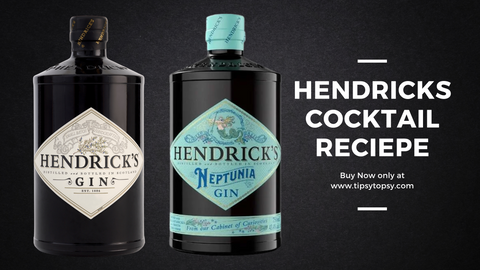The story of the Beam family is one of seven generations, more than 200 years, countless challenges and one goal; to make the best bourbon in the world. So sit back, pour yourself a bourbon, and prepare to travel back in time with the First Family of Bourbon.
OUR STORY BEGINS BEFORE KENTUCKY.
REAR BEFORE THERE WERE STATES.
In 1740, when the United States was still the thirteen colonies, the Boehm family came to America for the first time, determined to live the colonial dream. Forty-eight years later, they had moved to what is now central Kentucky and Americanized their German name to Beam. The hot summers, mild winters, and nearby limestone spring made their new home ideal for...you guessed it...corn growing. Not what you thought? Don't worry, the bourbon part is coming soon.
THE BIRTH OF BOURBON.
By the late 17th century, German, Scottish, and Irish settlers in western Pennsylvania were already making rye whiskey using recipes they brought with them from their homelands. But when the U.S. government began offering incentives to move west and plant corn, many packed up their families and moved to the Kentucky region of Virginia (weird times, we know). Among these farmers was Jacob Beam who, like others, used his father's whiskey recipe to distill his surplus corn into a new, sweeter type of whiskey - bourbon was born.
FROM THE CORN FARMER TO THE BURNER MASTER.
Perhaps the best decision Jacob Beam ever made was to sell his bourbon. He sold his first cask of Old Jake Beam Sour Mash in 1795, just three years after Kentucky became a state. His bourbon quickly became a local favorite — no small feat considering Kentucky was home to about 2,000 distillers in the early 1800s.
TO BOURBON AFICIONADO
Want to learn a little about bourbon? Well, you are in the right place. At Jim Beam®, we've been making bourbon since 1795—just three years after Kentucky became our nation's 15th state—which means we've had plenty of time to learn a thing or two about Native American spirit. For starters, how to make a damn good bourbon, what separates bourbon from whiskey, and how to make an extra delicious bourbon cocktail. And since you can't talk about bourbon history without mentioning the world's #1 bourbon, we happen to be an authority on it too.
WHAT SEPARATES BOURBON AND WHISKEY?
BOURBON IS AMERICA'S NATIVE SPIRIT
WHISKEY IS, WELL, WHISKEY
There are many different types of whiskey (or "whisky", depending on where you're from). Scotch Whisky, Japanese Whisky, Irish Whiskey, Tennessee Whiskey, Canadian Whiskey, Rye Whiskey, Bourbon Whiskey and of course Kentucky Straight Bourbon Whiskey (sorry if we missed anyone). At Jim Beam, we're pretty partial to the latter two, and to clarify why, we'd like to tell you what sets bourbon apart from the rest.
THE DIFFERENCE IS NOT JUST SEMANTIC IT IS THE LAW
All bourbon is whiskey, but not all whiskey is bourbon. A strict government policy governs what is what. Learn more about what constitutes "America's Native Spirit" and the difference between bourbon and whiskey below.
- Made in the United States of America (not Kentucky)
- Product from a fermented mash with at least 51% corn.
- Distilled at no more than 160 proof
- Aged at no more than 125 proof in new charred oak barrels.
- Age of at least two years.
- Free from additives.
For this reason, all bourbon is whiskey, not all whiskey can be called bourbon. Then there's Kentucky straight bourbon whiskey like Jim Beam®, which in addition to the above rules must also be made in Kentucky. We know it's a lot. But today, Jim Beam isn't just "the thing," it's the #1 bourbon in the world.
AT LEAST 51% CORN
Imagine enjoying some corn on the cob. It's cute, isn't it? This sweetness makes bourbon "whisky's sweet spot". And being made with at least 51% corn means all bourbons have a delightful sweetness not found in most barley- and rye-based whiskeys.
MAXIMUM PROOF.
Every time any type of alcohol is distilled, it comes out of the still with a higher alcohol content. But the process also removes everything that isn't alcohol from the liquid, including flavor. Because of this, vodka is essentially tasteless. Maximum proof means that bourbon retains more of the mash note flavors that would be lost with further distillation.
NEW, CHARRED OAK BARRELS
This type of cask aging imparts a richer flavor and deeper color than toasted or seasoned casks. Jim Beam is aged in new grade 4 American white oak casks for a smooth, smooth flavor with hints of vanilla and caramel. By the time we're done with these casks, some other whiskeys, scotches, wines and even beers have been known to use them in hopes of "borrowing" some of the deep and complex bourbon deliciousness locked in the wood.
AT LEAST AGED 2 YEARS
In general, the longer bourbon ages in oak casks, the milder it becomes. The law states that bourbon must be aged for at least two years, but time is only one variable affecting whiskey aging. For example, a whiskey matured in Kentucky will mature much faster than a whiskey matured in a more temperate climate like Scotland, due to the extreme temperature differences between the seasons. In fact, you could say that a few years in Kentucky are twice as long as in Scotland. Here at Jim Beam, we always age our bourbon at least twice as long as the law requires for a more mature, extra-smooth flavor.
NO ADDITIVES
Many whiskey makers add flavor or caramel color to their whiskeys. But even if they follow all other bourbon rules, they can't call their whiskey "bourbon." The only thing that can be added to bourbon is water (and that's just for proof).


